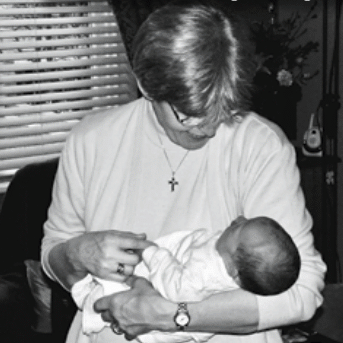
I couldn’t help but smile to myself as I wrote this heading… Only today someone was talking about this and said that the chances of sex happening again in the foreseeable future were slim – the journey of labour and giving birth was enough to ensure there was little chance of any pregnancy-inducing behaviour happening in their house!
However, the question of the contraceptive effect of breastfeeding does come up quite often so it’s important to know the facts. Breastfeeding as a way of avoiding pregnancy is referred to as the Lactational Amenorrhea Method, or LAM. This method has only a 1–2% failure rate (similar to condoms) providing all three of the following are true:
- The mother’s period has not returned since the birth of her baby (spotting or bleeding during the first 56 days does not count) AND
- The mother is breastfeeding her baby on demand day and night, with no other regular drink or food substitutes AND
- The baby is less than six months old.
If any one of these is not true, then the chance of LAM being effective is reduced. At the point that any one of the above conditions changes, the couple should use other methods of contraception if they are keen to avoid pregnancy.
Return of menstruation
During the first 56 days after a woman has given birth, spotting or bleeding does not count as a period. However, after the first 56 days, spotting or bleeding of at least two days or longer in duration should be considered as a period, or any other bleeding that the mother feels is a return of menstruation. This would mean that LAM may no longer be effective and other contraception should be used.
Breastfeeding at night
For the second condition to be considered effective, the mother should be breastfeeding at least once during the night as well as on demand during the day. Prolactin levels (prolactin is the hormone that tells the body to make breast milk) are higher at night thus having a greater impact on fertility. If the baby goes longer than four hours during the day or six hours at night without breastfeeding, or regularly has a five-hour break from breastfeeding in any 24-hour period, the effectiveness of LAM may be reduced, and other contraception should be considered.
Baby is less than six months old
Once a baby reaches six months of age, it is common for other foods to be introduced and for babies to go longer between feeds. Due to fewer breastfeeds taking place from six months onwards, LAM will become less effective and once again other contraception should be used.
Methods of contraception that will not impact breastfeeding are barrier methods such as condoms or diaphragms, spermicides, or non-hormonal IUDs. Natural family planning methods can be hard to use at this stage due to the impact of breastfeeding on the signs of fertility.
Other options
After the first six weeks, progesterone-only methods such as the mini-pill, injectable contraceptives, and other IUDs may be suitable. Progesterone-only methods are unlikely to have an impact on breastfeeding, but it is advisable to wait until six weeks or so has passed to allow breastfeeding to become more established as some mothers anecdotally report a reduction in supply.
Remember, if you do not want to get pregnant, choose a reliable form of contraception that you are able to use consistently – but no form of contraception is 100% guaranteed, not even sterilisation. The ONLY way to avoid pregnancy is to not have sex… I feel we have returned to the first paragraph!
Remember, it is always good to contact your local La Leche League group to discuss anything concerning breastfeeding.







